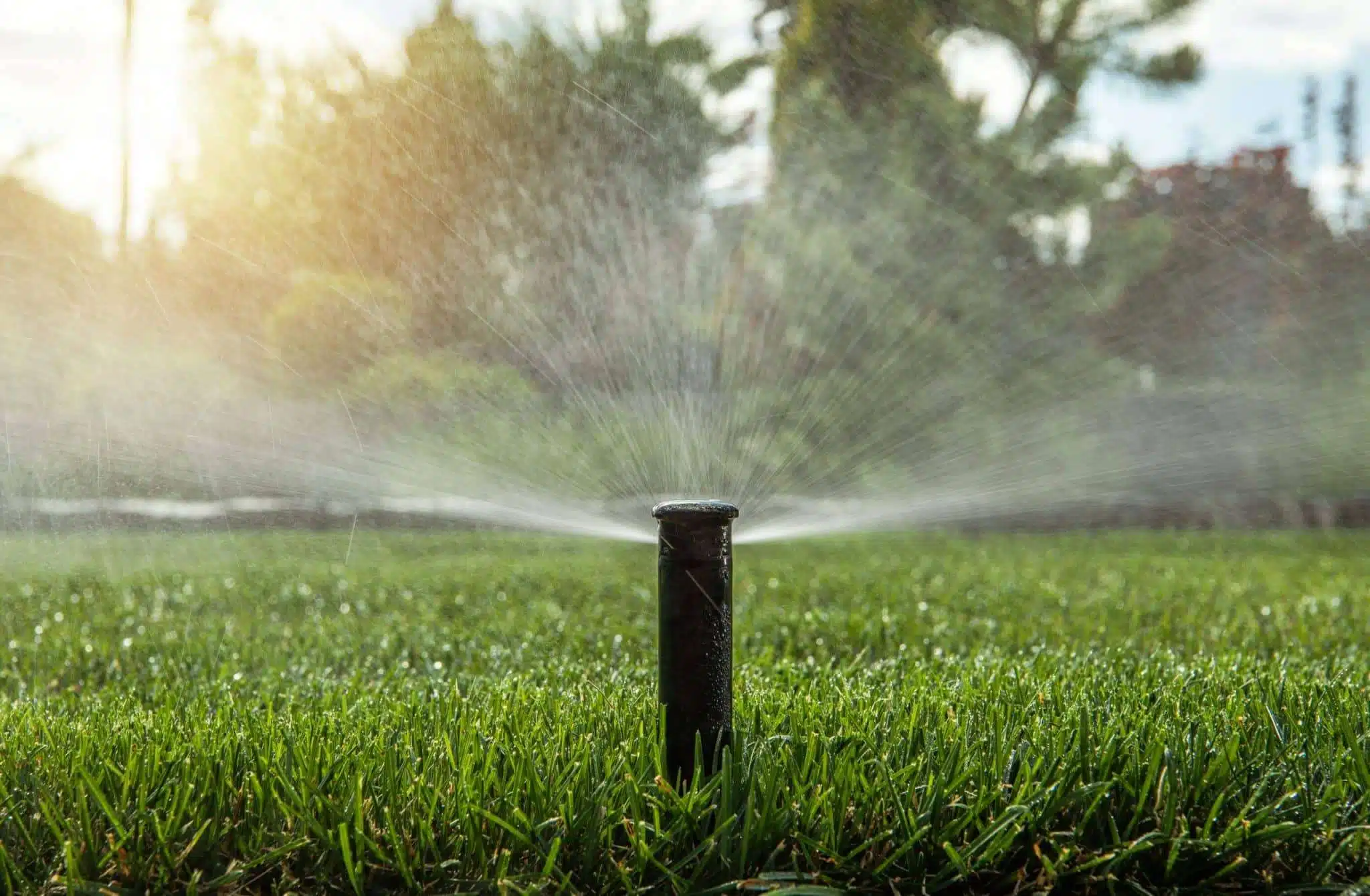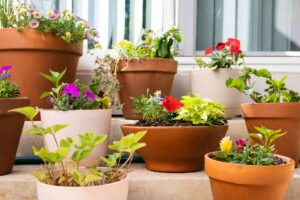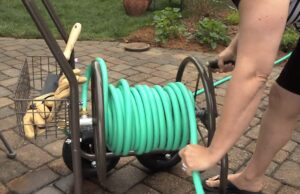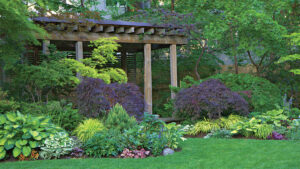Watering Strategies for a Drought-Tolerant Garden
In an era where water conservation is increasingly important, especially across many regions of the United States, creating and maintaining a drought-tolerant garden has become more than just a trend—it’s a practical necessity. Whether you’re living in the arid Southwest, the drought-prone California coast, or simply want to reduce your water usage and utility bills, implementing effective watering strategies for drought-tolerant landscapes can help you create a beautiful, sustainable garden that thrives with minimal water input.
This comprehensive guide will walk you through expert techniques, plant selection considerations, and innovative technologies that can transform your garden into a water-efficient oasis. By following these drought-smart watering practices, you’ll not only conserve one of our most precious resources but also save money while maintaining a vibrant landscape that can withstand dry conditions.
Understanding Drought Tolerance and Water Conservation
What Makes a Garden Drought-Tolerant?
A truly drought-tolerant garden isn’t just about cactus and rocks—it’s a thoughtfully designed ecosystem that maximizes every drop of water while still providing beauty and function. The foundation of water efficiency starts with understanding your local climate, soil conditions, and plant needs.
According to the U.S. Environmental Protection Agency’s WaterSense program, drought-tolerant landscaping (sometimes called xeriscaping) follows key principles that significantly reduce water requirements without sacrificing aesthetic appeal. These principles include:
- Appropriate plant selection based on local climate conditions
- Soil improvement for better water retention
- Efficient irrigation systems
- Strategic use of mulch
- Limited turf areas
- Regular maintenance to optimize water usage
By embracing these principles, you can reduce your landscape water use by 20-50% or more compared to traditional gardens, according to EPA estimates.
Water Usage in American Gardens: The Hidden Cost
Traditional American landscaping consumes an astonishing amount of water. The average household uses approximately 320 gallons of water per day, with 30-60% dedicated solely to outdoor uses—primarily landscape irrigation. In drier regions, this percentage can climb even higher.
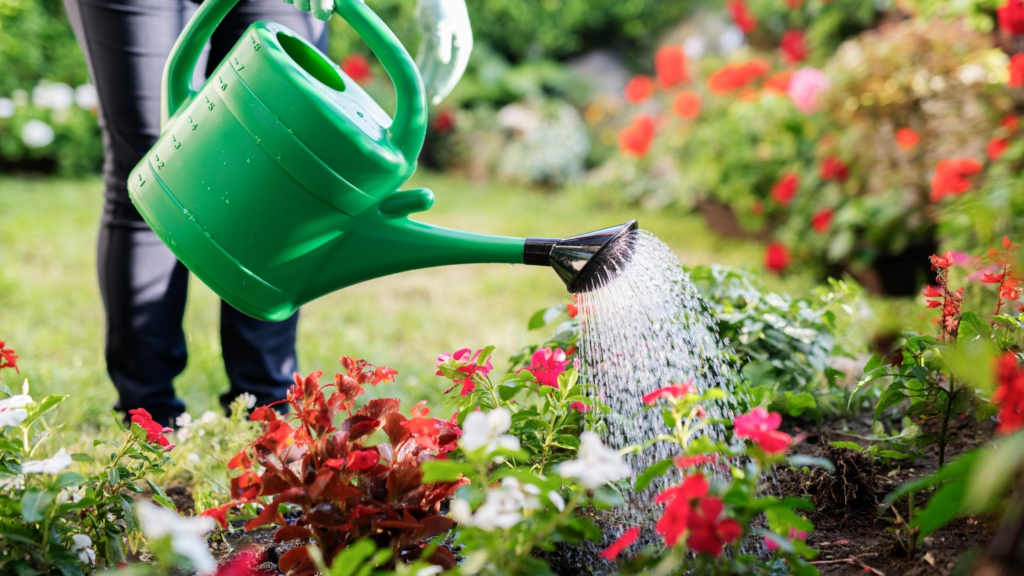
Here’s a breakdown of typical water usage in residential landscapes across different U.S. regions:
| Region | Average Annual Outdoor Water Use (Gallons) | Percentage of Total Household Water Use | Potential Savings with Drought-Tolerant Practices |
|---|---|---|---|
| Southwest (AZ, NM, NV) | 100,000+ | 60-70% | 50-80% |
| California | 90,000 | 50-60% | 40-70% |
| Pacific Northwest | 50,000 | 30-40% | 30-50% |
| Midwest | 60,000 | 35-45% | 35-55% |
| Southeast | 70,000 | 40-50% | 40-60% |
| Northeast | 45,000 | 25-35% | 25-45% |
Source: Compiled from EPA WaterSense data and USGS water usage reports
As this table demonstrates, the potential water savings from implementing drought-tolerant practices are substantial across all regions, with the most dramatic benefits realized in the driest areas of the country.
Essential Watering Strategies for Drought-Resilient Gardens
1. Matching Irrigation Methods to Plant Needs
Different plants have different water requirements, and using the appropriate irrigation method for each area of your garden is crucial for maximum efficiency. Here are the most effective irrigation methods for drought-tolerant landscapes:
Drip Irrigation: Precision Matters
Drip irrigation stands as the gold standard for water conservation, delivering water directly to plant roots with minimal evaporation or runoff. This method uses 30-50% less water than conventional sprinkler systems.
To implement an effective drip system:
- Install pressure regulators to maintain optimal water flow
- Use emitters that match the water needs of specific plants
- Schedule irrigation during early morning hours to minimize evaporation
- Inspect regularly for clogs or damage
For larger drought-tolerant shrubs and trees, consider using bubbler emitters that can deliver more water directly to the root zone. For perennial beds with mixed plantings, inline drip tubing with emitters spaced every 12-18 inches provides efficient coverage.
Soaker Hoses: Simple but Effective
Soaker hoses provide a low-tech alternative to drip systems while still offering good water efficiency. These porous hoses “sweat” water along their length, delivering moisture directly to the soil with minimal evaporation.
To maximize soaker hose effectiveness:
- Place hoses no more than 12-18 inches apart for even coverage
- Cover with 2-3 inches of mulch to further reduce evaporation
- Run at low pressure to allow water to seep rather than spray
- Operate in early morning for 30-45 minutes rather than frequent short cycles
Smart Controllers: Irrigation Intelligence
Technology has revolutionized irrigation efficiency through smart controllers that adjust watering schedules based on weather conditions, soil moisture, and plant needs. The EPA reports that smart irrigation controllers can reduce water use by 15-30% compared to conventional timer systems.
Look for controllers with these features:
- Weather-based adjustments using local data
- Soil moisture sensor compatibility
- Multiple programming options for different garden zones
- Mobile app control for convenient adjustments
According to the U.S. Department of Agriculture’s Natural Resources Conservation Service, implementing smart irrigation controllers represents one of the most cost-effective water conservation investments for homeowners, with typical systems paying for themselves within 1-3 years through water savings.
2. Strategic Watering Techniques
Beyond your irrigation system choice, how and when you water makes an enormous difference in drought-tolerant gardens.
Deep, Infrequent Watering
Perhaps the most important shift in thinking about drought-tolerant garden irrigation is moving from frequent shallow watering to deep, infrequent sessions. This approach encourages plants to develop deeper root systems that can access moisture stored further down in the soil profile.
For established drought-tolerant plants:
- Water deeply once every 1-2 weeks during the growing season
- Ensure water penetrates 12-18 inches into the soil
- Allow soil to dry moderately between waterings
- Adjust frequency based on temperature, rainfall, and plant conditions
This strategy works because most drought-adapted plants prefer a cycle of adequate moisture followed by a drying period. Constant moisture can actually harm many drought-tolerant species by promoting root diseases.
Timing Matters: When to Water
The timing of your irrigation significantly impacts water efficiency. Early morning watering (4:00 AM to 8:00 AM) provides several advantages:
- Lower wind speeds reduce evaporation and improve distribution
- Lower temperatures minimize evaporation loss
- Plants have access to moisture during the heat of the day
- Foliage has time to dry, reducing disease pressure
Evening watering, while better than midday, can promote fungal diseases in some plants due to prolonged leaf wetness overnight. If morning watering isn’t possible, late afternoon (4:00 PM to 6:00 PM) offers a reasonable alternative.
3. Hydrozoning: Group Plants by Water Needs
One of the most effective organizational strategies for a water-efficient garden is hydrozoning—grouping plants according to their water requirements. This practice allows you to target irrigation precisely where needed without overwatering drought-resistant plants or underwatering thirstier species.
A well-designed hydrozone plan typically includes these zones:
| Hydrozone TypeWater RequirementTypical IrrigationSuitable PlantsLocation in LandscapeVery Low (Zone 0)Rainfall only after establishmentNone or emergency onlyNative desert plants, succulents, highly drought-adapted speciesPeripheral areas, distant from houseLow (Zone 1)20-30% of reference ET*Monthly deep watering in summerMany Mediterranean, Australian, and California native plantsMost of the garden areaModerate (Zone 2)40-60% of reference ET*Bi-weekly deep wateringOrnamental shrubs, less drought-adapted perennialsTransition areas, partial focal pointsRegular (Zone 3)70-80% of reference ET*Weekly deep wateringVegetables, fruit trees, some flowering plantsSmall, high-visibility areas, edible gardens |
|---|
*ET (Evapotranspiration) is the amount of water lost through evaporation and plant transpiration.
By dedicating 70-80% of your landscape to very low and low water zones, you can reduce overall irrigation needs dramatically while maintaining focal areas with more water-intensive plants for maximum visual impact or food production.
Soil Management for Maximum Water Efficiency
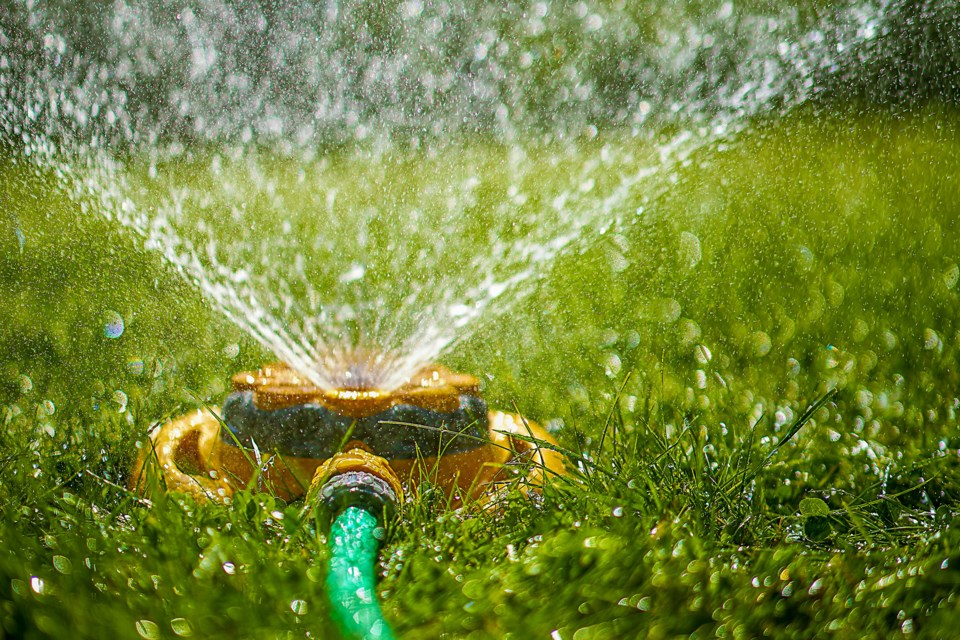
Building Drought-Resistant Soil
The foundation of any water-efficient garden is healthy soil with good structure and organic matter content. Well-structured soil acts like a sponge, holding moisture where plant roots can access it while allowing excess water to drain properly.
To improve your soil’s water-holding capacity:
1. Add Organic Matter Strategically
While conventional gardening wisdom suggests adding organic matter universally, drought-tolerant gardening requires a more nuanced approach:
- For non-native drought-tolerant plants: Incorporate 2-3 inches of compost into the top 6-8 inches of soil before planting to improve water retention without creating soggy conditions
- For native desert or extremely drought-adapted plants: Use minimal organic matter (1 inch or less) as these plants often perform better in leaner soil that drains quickly
- For vegetable gardens and moderate-water zones: Incorporate 3-4 inches of compost for better moisture retention
2. Avoid Compaction
Compacted soil severely restricts root growth and water penetration. Maintain good soil structure by:
- Minimizing foot traffic in planted areas
- Using designated paths throughout the garden
- Avoiding working soil when wet
- Adding organic matter annually to maintain soil structure
3. Consider Soil Amendments Beyond Compost
Several specialized amendments can improve water efficiency in drought-prone gardens:
- Biochar: This stable form of carbon can increase water retention by up to 30% in sandy soils while improving microbial activity
- Expanded shale or clay: These porous materials increase water-holding capacity while maintaining good drainage
- Wetting agents: For extremely hydrophobic soils, organic wetting agents can help water penetrate more effectively
A study by the USDA Agricultural Research Service found that combining biochar with compost improved water retention by 40% compared to unamended soil in drought-prone areas.
Mulching: Your Most Powerful Water Conservation Tool
Perhaps no single practice contributes more to water conservation in drought-tolerant landscapes than proper mulching. An effective mulch layer:
- Reduces evaporation from soil by 70-80%
- Moderates soil temperature fluctuations
- Prevents soil crusting and improves water penetration
- Reduces weed competition for soil moisture
- Adds organic matter to soil as it breaks down
For optimal water conservation, apply these mulching principles:
Organic vs. Inorganic Mulch
Both organic and inorganic mulches have their place in drought-tolerant landscapes:
Organic Mulches (wood chips, straw, compost):
- Apply 2-4 inches deep, keeping mulch pulled back slightly from plant stems
- Replenish annually as material breaks down
- Best for areas with non-desert plants that benefit from soil building
- Avoid fine-textured materials that can form water-repelling crusts
Inorganic Mulches (gravel, decomposed granite, river rock):
- Apply 2-3 inches deep after laying landscape fabric
- Excellent for desert and extremely drought-tolerant plantings
- Reflects less heat than organic mulches in hot climates
- Requires minimal replacement over time
Advanced Water Conservation Techniques
Rainwater Harvesting Systems
Even in drought-prone regions, capturing the rain that does fall represents an enormous opportunity. According to the American Rainwater Catchment Systems Association, a 1,000 square foot roof can collect approximately 600 gallons of water from just 1 inch of rainfall.
To implement a basic rainwater harvesting system:
- Install gutters and downspouts directed to collection barrels or cisterns
- Use screened inlets to prevent debris accumulation
- Position barrels on elevated platforms for gravity-fed irrigation
- Connect overflow systems to appropriate drainage areas
- Consider first-flush diverters to improve water quality
For more sophisticated systems, underground cisterns with pump systems can store thousands of gallons for use during dry periods. The U.S. Department of Energy’s Office of Energy Efficiency & Renewable Energy provides excellent resources on integrated water management systems for residential properties.
Greywater Systems: Recycling Household Water
Greywater—the relatively clean wastewater from bathroom sinks, showers, and washing machines—represents another untapped resource for garden irrigation. A typical household produces 90-120 gallons of greywater daily that can be safely used on ornamental landscapes.
Before implementing a greywater system:
- Check local regulations, as codes vary significantly by location
- Use plant-friendly, biodegradable soaps and detergents
- Design systems to distribute water directly to soil, not through sprayers
- Include surge tanks and simple filtration for improved performance
Even simple greywater systems, such as washing machine diversions to landscape basins, can save thousands of gallons annually while reducing strain on septic or sewer systems.
Selecting and Establishing Drought-Tolerant Plants
Native and Adapted Plant Selection
The most fundamental aspect of a water-efficient garden is choosing the right plants. Native and adapted species that naturally thrive in your region’s rainfall patterns will require minimal supplemental irrigation once established.
When selecting plants, consider:
- Local precipitation patterns and distribution throughout the year
- Microclimate conditions in different areas of your property
- Soil type and drainage characteristics
- Mature plant size and spacing needs
- Visual and functional goals for your landscape
The USDA’s PLANTS Database provides extensive information on native species appropriate for different regions and growing conditions.
Establishment Period: The Critical Phase
Even the most drought-tolerant plants require regular irrigation during their establishment period. This investment in water during the first 1-2 years pays enormous dividends in long-term water savings as plants develop extensive root systems.
Follow this establishment watering schedule for optimal results:
- Weeks 1-2: Water deeply every 2-3 days
- Weeks 3-4: Water deeply twice weekly
- Months 2-3: Water deeply once weekly
- Months 4-6: Water deeply every 10-14 days
- Months 7-12: Water deeply every 2-3 weeks
- Year 2: Begin transitioning to mature plant watering schedule
Remember that these are general guidelines—adjust based on weather conditions, soil type, and plant responses. Signs of water stress include wilting, leaf curling, or color changes.
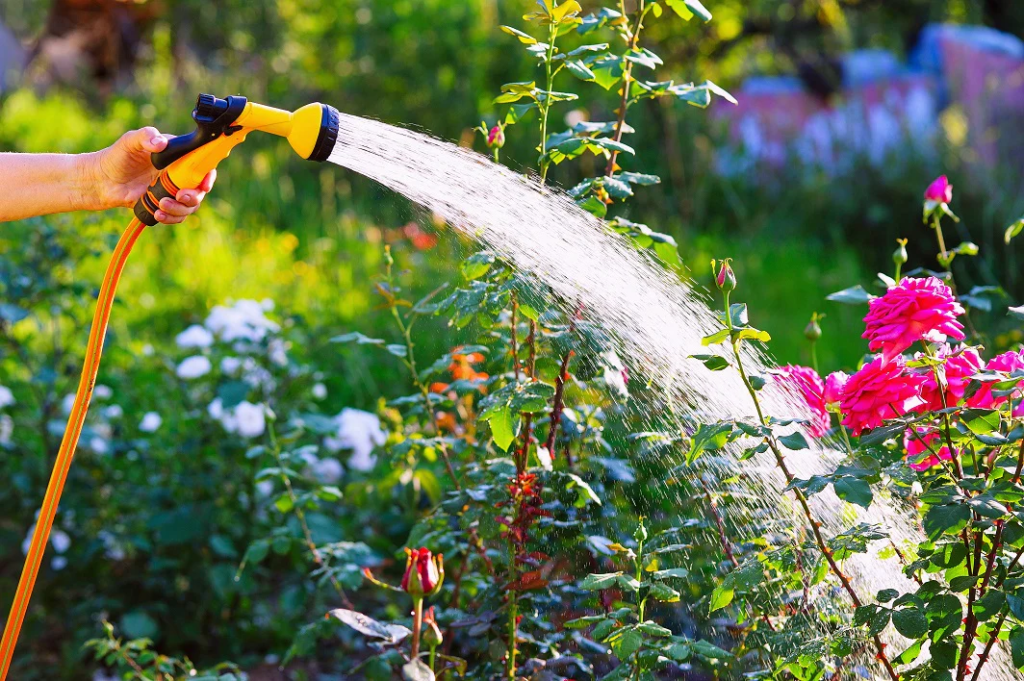
Maintaining Your Water-Efficient Garden
Seasonal Adjustments
Water requirements fluctuate dramatically throughout the year with changes in temperature, daylight hours, and precipitation. A truly efficient irrigation strategy adapts to these seasonal differences:
- Spring: As temperatures rise and plants enter active growth, gradually increase watering frequency but maintain deep irrigation practices
- Summer: Implement your full drought management strategy, focusing water on highest-priority plants
- Fall: Gradually reduce irrigation as temperatures cool and day length decreases
- Winter: In mild-winter areas, continue reduced irrigation during dry periods; in cold-winter regions, ensure plants receive moisture before ground freezing
Smart irrigation controllers make these adjustments automatically based on weather data, but manual systems require regular adjustment throughout the growing season.
Ongoing Practices for Water Efficiency
Maintaining water efficiency is an ongoing process that requires regular attention to several key practices:
- Monitor soil moisture using a simple soil probe or moisture meter rather than following a rigid schedule
- Prune appropriately to maintain plant health without stimulating excessive water-demanding new growth
- Control weeds rigorously as they compete for valuable soil moisture
- Replenish mulch annually before hot weather arrives
- Adjust irrigation components as plants mature and their root zones expand
- Perform seasonal system maintenance including checking for leaks, clogs, and proper operation
Conclusion: A Sustainable Approach to Garden Beauty
Creating a drought-tolerant garden doesn’t mean sacrificing beauty or enjoyment—it means working harmoniously with nature’s water cycles while creating a resilient landscape. By implementing the strategies outlined in this guide, you can reduce your water consumption dramatically while still enjoying a vibrant, colorful garden that enhances your property and provides habitat for beneficial wildlife.
As climate patterns continue to shift across the United States, these water-wise practices become increasingly valuable not just for conservation reasons but for the very viability of residential landscapes. The investment in proper planning, appropriate plant selection, efficient irrigation systems, and ongoing maintenance pays dividends in lower water bills, reduced maintenance time, and gardens that remain beautiful even during water restrictions.
Whether you’re converting an existing landscape or starting from scratch, remember that drought tolerance is achieved through a comprehensive approach—there’s no single solution that creates water efficiency. By combining multiple strategies tailored to your specific site conditions, you’ll create a garden that’s not just surviving drought conditions but thriving with minimal water input.
